If you are new to chicken keeping or just want to learn more about winterizing a chicken coop, you will find lots of good info here! When we got our chickens earlier this year, we did lots of research into how to keep the chickens safe and warm in the winter. We live in the Pacific Northwest where it gets cold and occasionally snowy in the winter. Here you will find some simple techniques to help winterize a chicken coop this winter, how to keep your chickens warm naturally, and some other natural chicken keeping techniques.
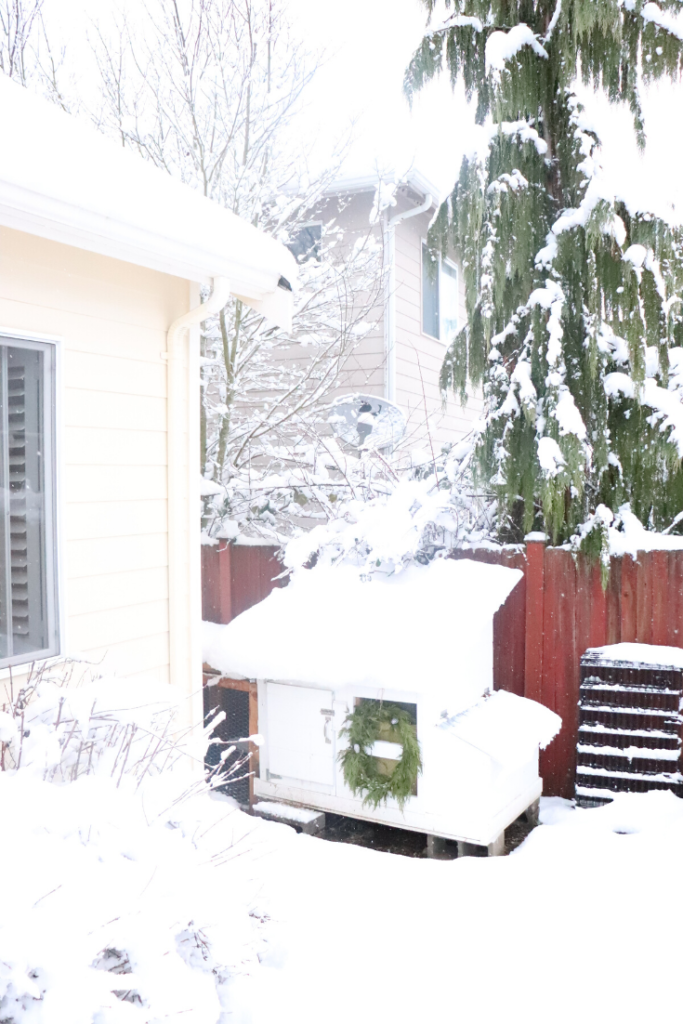
This post contains affiliate links, which means I may make a small commission off items you buy at no extra cost to you 🙂
Will Chickens Survive the Winter?
When we first started chicken keeping last year, we had no clue how to keep chickens in the wintertime. In fact, we figured it would be a difficult task here in the PNW because we do get cold weather and snow. However, after much research and our own experience with chickens so far, I can confidently say that I had a harder time taking care of our 3 backyard ladies in the summer than in the winter. So yes, chickens will absolutely survive the winter and they are meant for the cold. Not to worry!
Whether or not you should take different measures to keep your chickens warm and happy in the winter depends on where you live and some personal preferences. I am not going to go into all the possible details of winter time chicken keeping, only a few simple ways that have worked for us thus far.
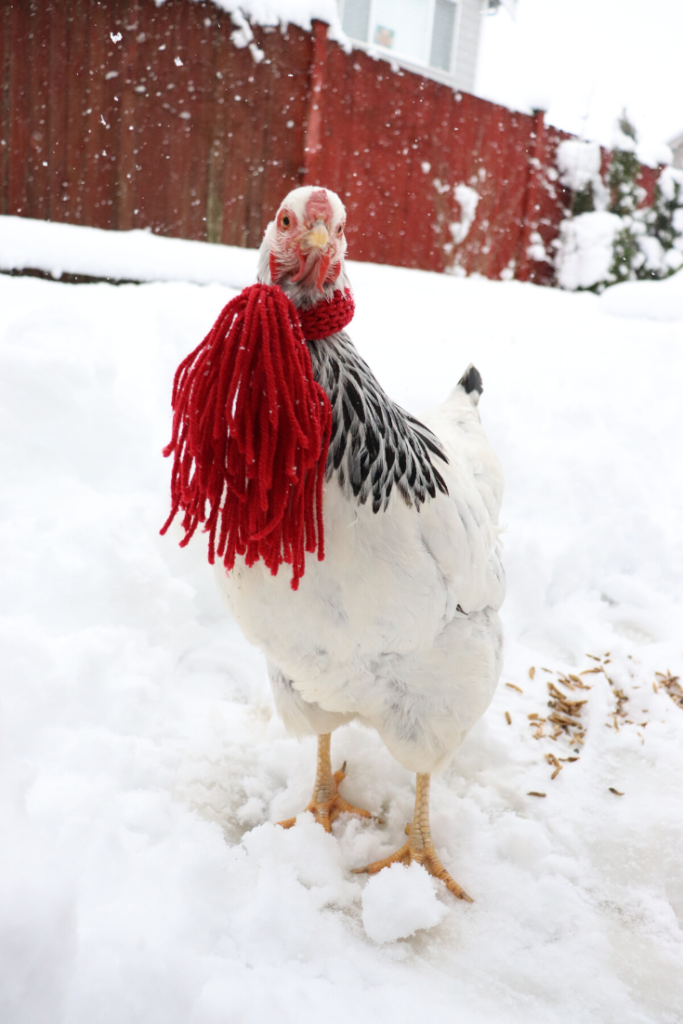
How to Keep Chickens Warm
One thing I didn’t realize when we first started chicken keeping was that chickens are actually naturally very warm animals. Of course they must be, because they can incubate their own eggs. So when chickens huddle together they can actually create quite a bit of heat. This also explains why our chickens were so miserable in the summer time. If you haven’t noticed, chickens have several layers of feathers so they are able to maintain a high body heat, especially when sitting together.
A note on coop heaters. There are coop heaters, heated roost bars, and all sorts of things you can use to add electric heat to your coop. We have never used these devices because we’ve heard of the high risk of fire to the coop. So, I can’t recommend that one. Chickens survive in far colder temperature than we see here in Seattle, so I don’t see a need to explore such a risky option.
So, here are my simple & natural ways of keeping our chickens warm:
Add Straw to Your Coop
In the summertime, we lay down pine shavings in the coop for the girls to sleep on. In the winter, we do a layer of pine shavings followed by a layer of straw (not to be confused with hay, which has more green in it and is more likely to grow mold). We have found that straw is good at preventing water accumulation in the coop (which we have a lot of, due to rain) so it keeps things dry. When temps drop below 32 degrees F, you definitely don’t want water in your coop, or your chickens could get frost bite. A nice thick layer of straw provides a warm, dry, and comfortable bedding in the winter.
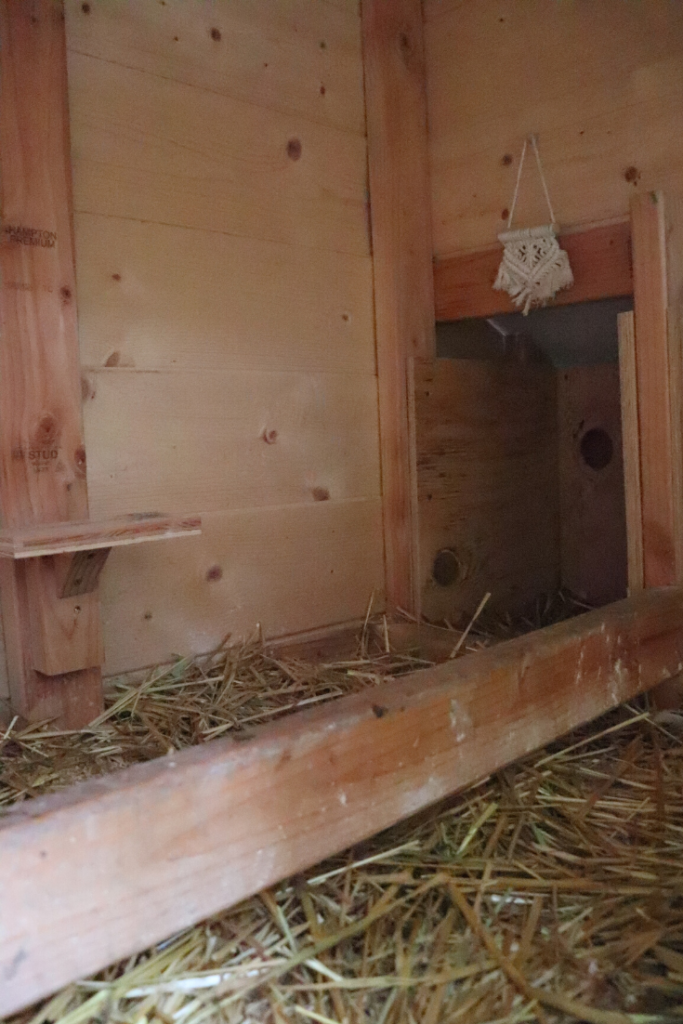
Minimize Cold Drafts but Keep Ventilation
Next, close the doors in the coop to minimize a cold draft. Your coop should have proper ventilation (preferably at the top of the coop) but you don’t want large windows or doors open during the night that could allow a hefty draft. I even put a cloth curtain over the bottom of the windows in our coop to keep it warmer in there. In our yard, we have a problem with sideways rain and snow. So, anything to keep the inside of the coop dry is what we’re interested in!
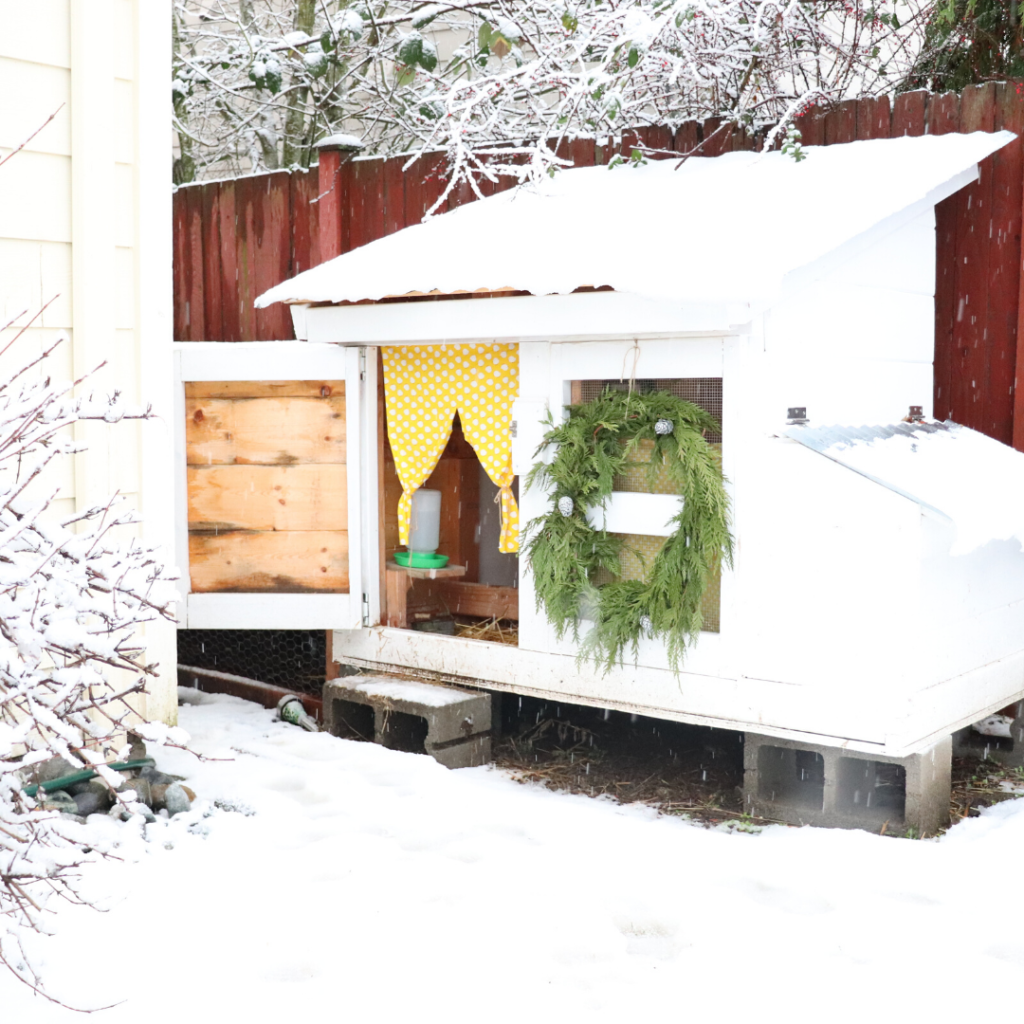
Scratch Grains before Bed
I learned this trick from Lisa Steele over at Fresh Eggs Daily. It takes more energy for a chicken to digest grain, so giving them some scratch grain before bed can help warm them while they sleep as they metabolize the grain. Always feed your chickens the proper feed and nutrient balance, but throwing a few handfuls of grain before bed can help keep them warm. It’s good to note this in the summer time too, to avoid too many grains during hot temperatures.
We like to feed our chickens store-bought organic scratch grain, as well as mix our own. We actually ferment our chicken food combining organic feed crumble with sunflower seeds, flax seed, peas, cracked corn, chia seed, pumpkin seed, and organic rolled oats. You can find that recipe here. This helps save money on chicken feed because it wastes less and they consume less since the grain is expanded due to fermentation.
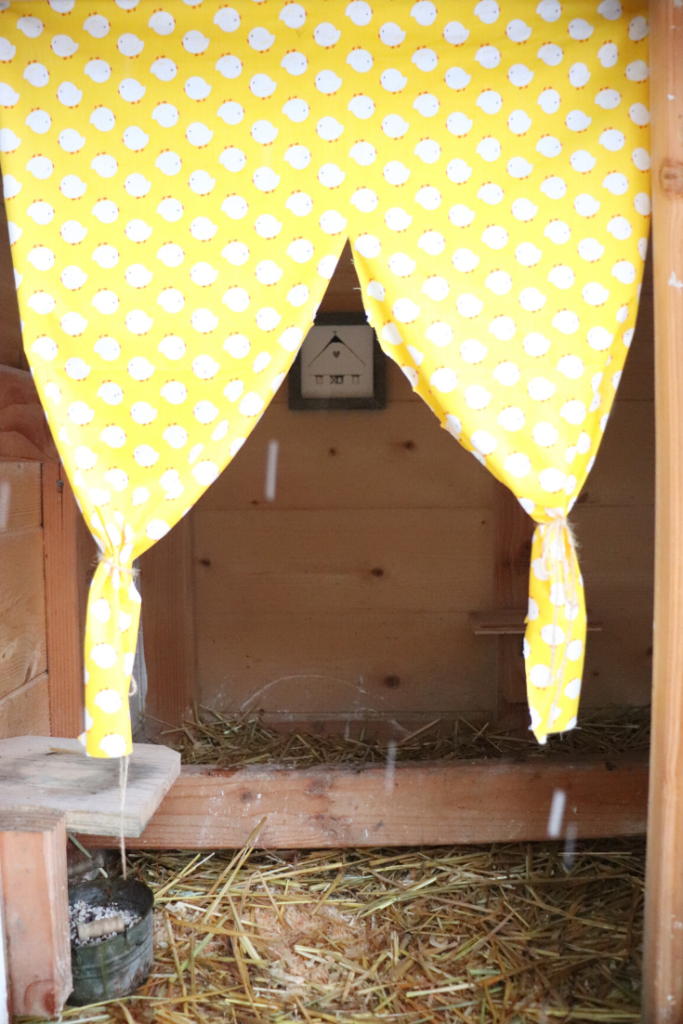
Naturally Cleaning the Chicken Coop
I wanted to share this natural chicken coop cleaner that we’ve been using and that I really like. In the video tutorial below you can see my process from start to finish of cleaning out the coop. If you are new to chicken keeping, I’ll start by saying the most important reason for cleaning your chicken coop is to prevent things like mites, bugs, mold, or other infectious items from growing or living in the coop. Also, you don’t want your chickens eating scraps of their own poo, and you don’t want them breathing toxic air. So all of that to say that you want a coop that’s (for the most part) free of poo, is dry, has good ventilation, and smells good.
My biggest tip for naturally cleaning the chicken coop is to clean it daily. Now, we only have three chickens so obviously this is easier for me to do than someone with 20 or 50 chickens. But, the premise is the same. If your chickens are pooping in the coop every day, and you don’t clean it, you’ve got a greater risk of them getting sick and bad stuff growing in there. So for us, I clean the coop every morning. I scoop the poop out like we do a litter box. I don’t like the thought of the chickens eating or sleeping on their poo (and neither do they). In fact, if there is poo in the nesting box, the chickens don’t want to lay their eggs in there.
While I do a quick clean every morning, about once a month I like do a full clean out. Remove all the bedding, clean the walls and floor, add fresh bedding, and add some dried florals to make it smell like a happy home!
Natural Coop Cleaner Ingredients
In our chicken coop, we use a simple mixture of water, white distilled vinegar, gentle dish soap, and garlic oil in a spray bottle to clean the inside of the coop. If you didn’t know, the scent of garlic is a natural bug and rodent deter-er. The chickens like the smell of garlic, and other bugs hate it.
Ingredients:
Two cups water
1/4 Cup distilled white vinegar
One to two tablespoons of gentle dish soap (like Meyer’s or Castile Soap)
A few squirts garlic oil (you can find organic garlic oil on Amazon)
After I use the coop cleaner on the inside of the coop, I fill it with bedding. In the winter, I use a layer of pine shavings to become compact at the bottom. Then, I put a thick layer of straw. Lastly, we top it off with some dried florals for good scent and a happy mood booster for the ladies. Luckily I still have some dried lavender leftover from the summertime. But I also use dried coop nesting blends from a local company that makes them. You can find those on Etsy and Amazon.
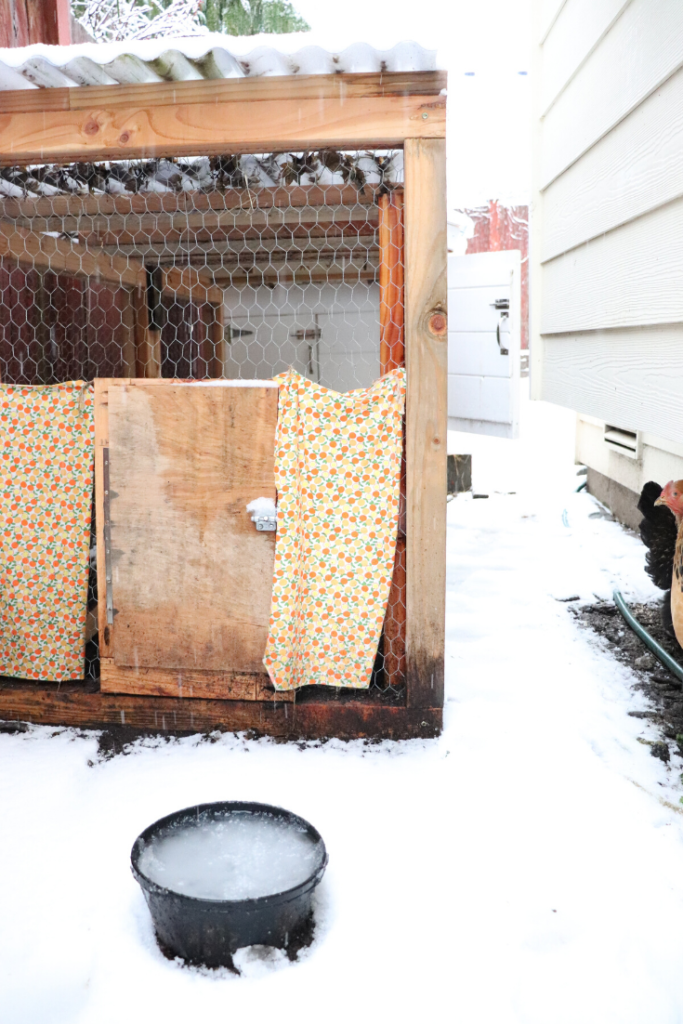
Summary: How to Winterize the Chicken Coop
In summary, here’s how we help our chickens have a happy, warm winter:
- Keep the coop clean! We clean out poo every day like a litter box. Once a month, we do a full clean out.
- Clean the coop with a natural cleaner. Use a mixture of water, vinegar, garlic oil, and gentle dish soap in a spray bottle. Spray all sides and corners of the coop and wipe down to clean.
- Fill the coop with warm bedding. Use a layer of pine shavings followed by a thick layer of straw. Straw helps keep the coop dry and helps your chickens stay warm.
- Keep the big doors and windows shut in the coop. Add curtains to the lower parts of the windows and fence to keep warmth to reduce the cold draft. Allow plenty of ventilation in the coop, especially at the top.
- Feed the chickens some extra grain before bed in the winter. Grain takes more energy to metabolize, so it will help keep the chickens warm as they sleep.
- Add some dried florals for a good scent and to promote a happy mood in the coop. We like dried lavender!
I hope this helps you keep your chickens warm and happy in the winter. If you’re new to this page, make sure you subscribe on YouTube and follow on Facebook. Each week I post new farm-to-table recipes, homesteading, and healthy living tips from our Homestead in Duvall. Thanks for stopping by!
Keep Reading…
How to Build a Simple Beautiful Chicken Coop
Recipe for Homemade Fermented Chicken Feed
Top 9 Homesteading Books to Start Living Simply
Free Ebook! Click here to download the Beginner’s Guide to Homestead Living Ebook
Pin it for Later!
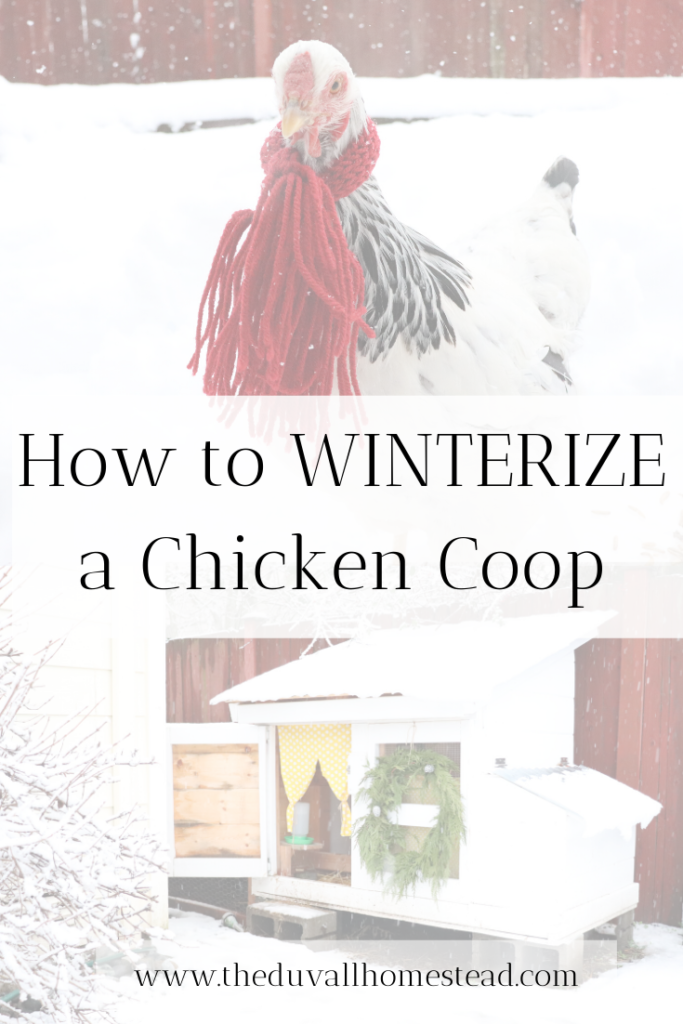



I love these pictures in this post, so cute!! Such good information! We need to do this to our coop!
Thank you Laura! Yes, it is very handy when the weather gets cold!
I love these pictures in this post, so cute!! Such good information! We need to do this to our coop soon as it gets colder!
I love these pictures in this post, so cute!! Such good information! Thanks for sharing. We need to do this to our coop soon as it gets colder!
I love these pictures in this post, so cute!! Such good information! Thanks for sharing.
I love these pictures in this post, so cute!! Such good information! Thanks for sharing.
So cute!
Aren’t they?? 🙂
I remember how hard it was living in the north and trying to keep our girls and Sammy the rooster warm. He did get frost bite on his comb but he survived. Great info 🙂
Aw! Poor baby. Glad he was OK!
That’s a lot easier than I thought! Love your photos too!
Thank you so much! We like easy 🙂